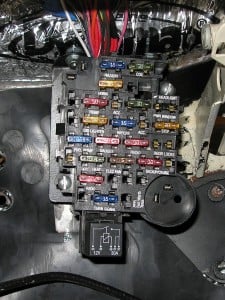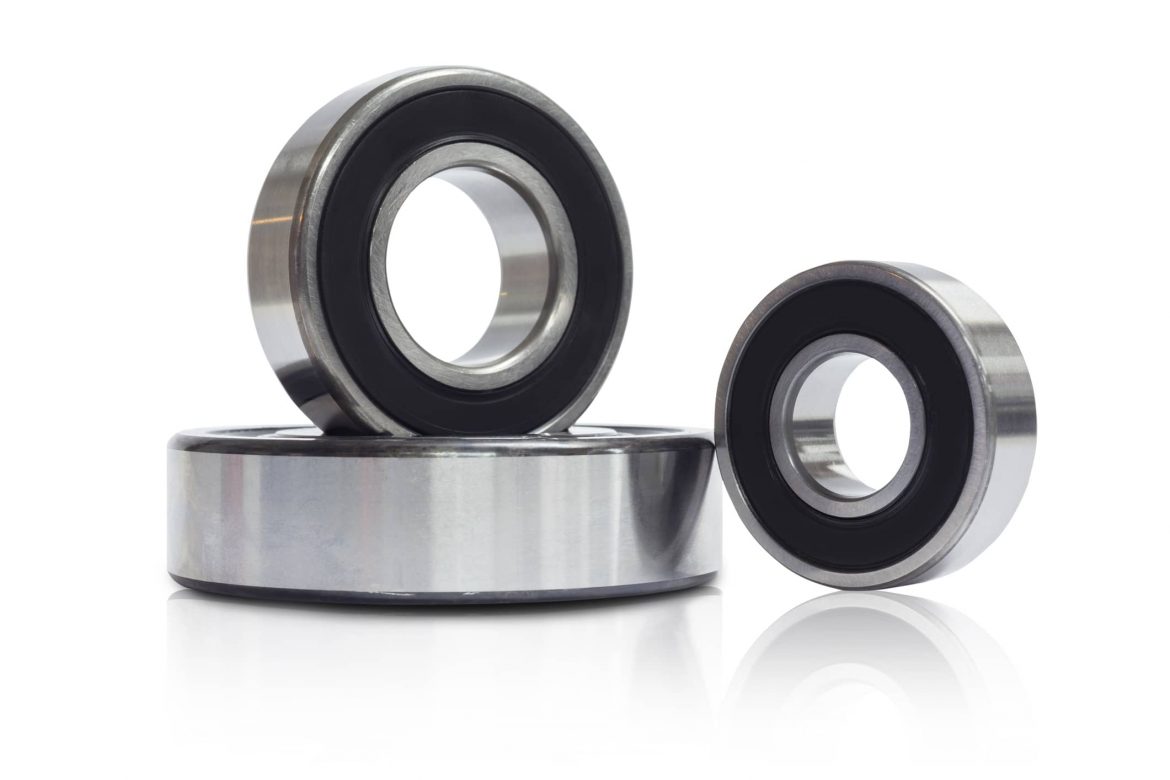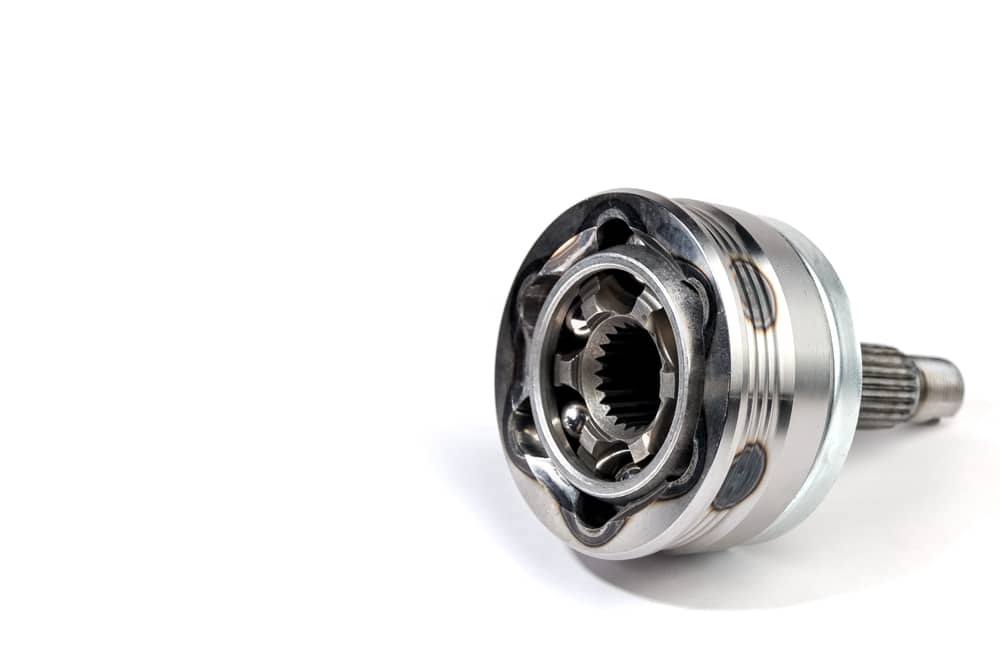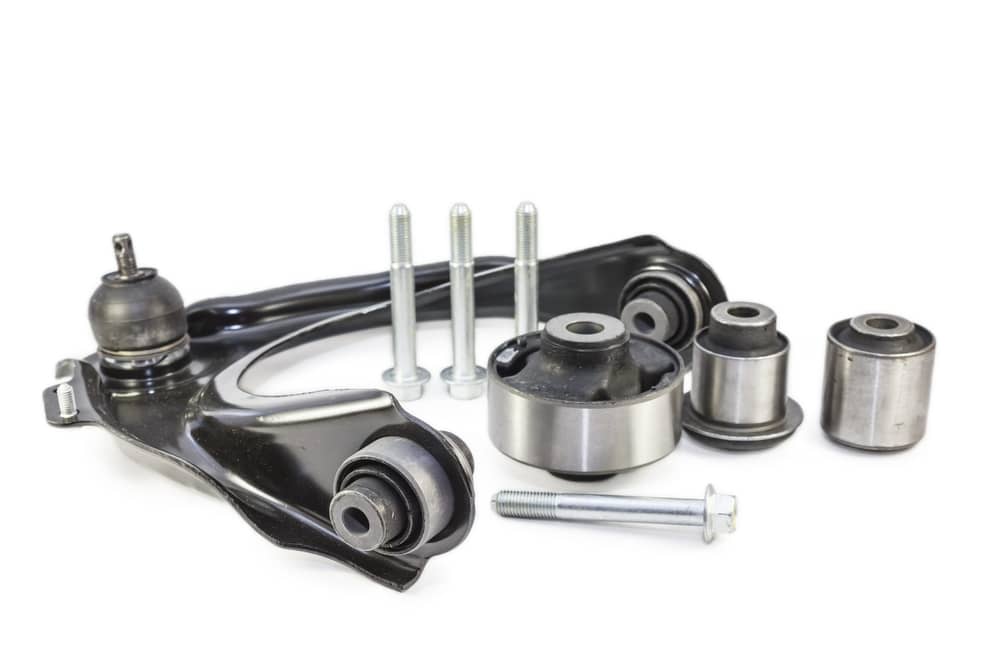Diagnosing electrical problems in your car can be tricky business. Maybe some lights go on and off, or the radio or clock has stopped working. Most of the time, our instinct to fix an electrical problem is to bang on the dash board a few times and hope whatever it is comes back on.
You may be lucky and just have a loose wire and banging just right on something might get it to fall back into place, but most times electrical problems are not that simple. Vehicles built in the 60s and 70s had very few electrically controlled devices as most things were controlled through a mechanical linkage. In the 80s and early 90s many automobile manufacturers started using vacuum controlled solenoids to operate small things like switches in the engine or the vents on your ventilation system. Since then, just about everything has become electronically controlled and regulated. Most of the electronics in your vehicle will last a very long time and never be changed, but when something does go wrong it can be difficult to pinpoint the problem.
How do I diagnose an electrical problem?
If you are having a problem with an electrical component in your vehicle the first place to start is in the fuse box. Most cars have a few different fuse boxes. Most of the time, one is in the engine bay and a second is in the vehicle somewhere under the dash or on a kick panel. The engine bay fuse box usually holds the larger fuses for things like the alternator, electric fans or starter. The fuse panel inside usually houses the smaller fuses for things like the brake lights, clock and radio. There will be a diagram of which fuse goes to what on the underside of the cover or in your owner’s manual. Find the fuse for the component you are having problems with and pull it out. If the glass or plastic appears dark or burnt the fuses is probably blow and should be replaced.
 If it turns out your fuse is good you can move on to checking the component itself. Make sure it is plugged in, free to move and not burnt or melted. Many of the electrical components on your vehicle can be tested without being removed by measuring a resistance value between certain contacts. If you’re handy with an ohm meter and have a repair manual for your vehicle you can test the component that way.
If it turns out your fuse is good you can move on to checking the component itself. Make sure it is plugged in, free to move and not burnt or melted. Many of the electrical components on your vehicle can be tested without being removed by measuring a resistance value between certain contacts. If you’re handy with an ohm meter and have a repair manual for your vehicle you can test the component that way.
Another item to test if you are having electrical problems is the relay for that component. Relays are used in high power devices and are essentially electrically activated switches. When you turn your car on, multiple components turn on like the fuel pump, computer and electric fans. A small amount of power is run through the switch in your ignition which can then activate multiple relays turning all the peripheral equipment without running full power for all of them through the ignition switch. Relays also can go bad over time and cause electrical problems. The best way to test a relay is to have a helper touch or listen to the relay while you turn the device on. You should feel a slight tap and hear a quiet click as the relay engages.
If your problem is not with your electrical component, the fuse or the relay then you most likely have a wiring problem. Every electrical circuit needs to create a way for electricity to get to the device you are powering and also for the electricity to continue on back to the battery. If one of the wires delivering power or return power is not making a good connection, your electrical component will not work.
Bad connections can happen for a variety of reasons. As wires carry electricity they get hot, so it is possible after a lot of use for a connection to melt and no longer make contact. If the connect is outside of the cabin of the car it could get rusty or dirty to the point where electricity will no longer flow. It is also possible that from use and vibrations the wires simply disconnect. In this case you need a wiring diagram for your vehicle, a circuit tester and a lot of patience.
How do I fix a car’s electrical problem?
If you find yourself with a broken circuit make sure it is professionally repaired to make sure it doesn’t happen again. This may include replacing a single wire or an entire section of your vehicle’s wiring harness. Bad wiring can be difficult to track down and can cause a lot of problems with your vehicle. Make sure to have any electrical problems you have fixed quickly and professionally to avoid future problems and a possible fire hazard. Click here for more info about car repairs! And click here for all BlueDevil products.
BlueDevil Products can be found on Amazon.com or at AutoZone, Advance Auto Parts, O’Reilly Auto Parts, NAPA, and other major auto parts retailers.
24 responses to "Diagnosing Electrical Problems"
24 Comments
Related Articles




Your article is so educative, and easy to understand. Thanks
I have a 2003 Tahoe 5.3 and my dashboard doesn’t work when I turn on my turn signal my gauges move what is that
Mike,
Thanks for your question about your Chevy Tahoe. The problem you’re experiencing sounds like you’ve got some electrical shorts in your gauge cluster. The gauges and lights on your dash board get their power and signals through a printed circuit board and lots of small connections. It sounds like some of those connections may be loose or shorting out. You may have to get a new gauge cluster to fix the problem. If you want to attempt to fix the problem, try starting by reading our article about electrical problems here: https://gobdp.com/blog/diagnosing-electrical-problems/.
Thanks again for your question!
-BD Auto Pro
I have 2006 vw jetty 2.5 wipers doesn’t work I replaced 2 times the motor still not working really need help.
Isra,
Thanks for your question about your Jetta. If you’ve tried 2 different wiper motors and neither of them worked then your problem must be somewhere else. You can start by checking the easy stuff, the fuses and relay, for your wipers. The fuse and relay should be in the fuse block in your engine bay.
If the fuse is good and the relay is working correctly then you’ll need to get out a voltmeter and find out where you’re the interuption is in the circuit. You will need an electrical diagram that shows where the electrical connectors are that have wiring for your wiper. With the car turned on and the wiper switch on, disconnect these connectors starting with the ones closest to the fuse and check for power. Eventually you will find no power at one of the connections and you’ll need to replace the wiring or the component before that electrical junction.
Thanks again for your question!
-BD Auto Pro
I have a 2013 Altima. I had to get a new driver side mirror (it is electronically controlled) replaced because it got completely knocked off. The day i picked up my car from the repair shop my left turn signal bulb is blown, none of my widows will roll down and my power driver seat wont move. Everything else works. The mechanic said it’s not the switches because they work when direct power is applied but not on their own.The mechanic said he doesn’t know what the issue is. I dont want to accuse the mechanic of damaging my car but if everthing worked before it was in his posession, I can only conclude that something went wrong during the initial repair my vehicle. Please help!!!!
Brittany,
Thanks for your question about your Nissan Altima. We’ve found that often times when problems happen after a maintenance item is completed they are usually related, so hopefully your mechanic will be willing to at least diagnose the problem and help you understand whether or not he could have caused it. Your mechanic should have done this by you can try checking your fuses for the systems that aren’t working to see if they are blown. If you have a wiring diagram for your car you can also trace the wiring for those systems and see if they lead back to a common point or junction box that may be damaged or simply unplugged. Lastly, it could be a grounding issue rather than a power issue so you could check grounding points on your vehicle for rust or damage as well.
Thanks again for your question!
-BD Auto Pro
I have a 2003 Hyundai Sonata the shop did a by pass on my a.c. I have a Switch I turn on for a.c. because my computer wasn’t reading when I initially turned it on ok everything was working jus fine until yesterday freon was coming from under my car not the hood took it to shop they noticed one of my fans wasn’t working help me figure this out an how much will this problem cost.
Tiffany,
Thanks for your question about your Hyundai Sonata. It’s difficult for us to help you estimate cost because labor rates can vary widely around the country. Our recommendation would be to call a few mechanics in the area and ask for a repair quote to make sure you’re getting a good deal. Also, if your fan is malfunctioning it could be as simple as replacing a fuse or relay, or as complicated as replacing your whole fan assembly, so it depends on what the actual problem is.
Also, if you noticed a refrigerant leak in your system, we would recommend adding Red Angel AC Stop leak (available here: http://store.gobdp.com/a-c-stop-leak-aerosol-00222/) to seal the leak and keep your AC system working properly.
Thanks again for your question!
-BD Auto Pro
I have a 2003 mercury marquis and my windshield whipers don’t work at all…took it to a mechanic to fix and they already replaced all the fuses but it still doesn’t work, they said its an electrical wiring problem and they can’t do it and they said its gonna cost 1,000-4,000 to fix …I wanna see how I could fix it myself but need help.
Vicky,
Thanks for your question about your Mercury Marquis. Based on your description, your mechanic is most likely correct and you’ve got a wiring issue. You can try following the procedure in the article starting with the electrical connection at your wiper motor to see if it has power. If it doesn’t have power there you can move back to the control module for your wipers, then to the control switch by your steering wheel. Checking these wires for power will require removal of different components to gain access to the wires so it could be a lengthy process.
Thanks again for your question!
-BD Auto Pro
I have a Hyundai Veloster 2012. I noticed a day ago that the radio wasn’t coming on at all. All of the other dash board electronics were working including the fans. I suspected a fuse and consulted the manual as to where it would be and located it. Unfortunately, they don’t have an actual fuse labeled “radio”, but they had one labled “Audio 2” and one labeled “multimedia”. So I used pliers to pull each fuse to check them. Both appeared undamaged, so I put them back. When I went to turn the engine on I got nothing. Now my car won’t start at all. I reread the manual and it warned not to pull the fuses with a screwdriver or any metal object. Unfortunately, the pliers were metal. I don’t know what to do. Is there a simple fix or will I have to have the car towed to a mechanic?
Karen,
Thanks for your question about your 2012 Veloster. First, great job checking the fuses! Our guess is that there is another fuse closer to the battery that has blown that is keeping everything from working. As the manual stated, when you use something metal to pull the fuses there is always the possibility that you connect things that shouldn’t be connected and cause a large short. You can try checking the fusible link by the battery, the alternator fuse or any circuit opening fuses your car might have. These fuses will be larger and probably in your engine bay.
If all you have is pliers to pull the fuses you may consider covering the jaws in electrical tape to keep from shorting a circuit out again.
Thanks again for your question!
-BD Auto Pro
Im having a problem with my buick 1992 one day turns on and another day wont turn on what could he happening with it?
Geli,
Thanks for your question about your 1992 Buick. If the engine is turning over but not starting then your problem is probably with your ignition system or you fuel system. If the engine doesn’t turn over at all when you try to start it then your problem is most likely that your starting is going bad and needs to be replaced. Many auto parts stores will test your starter for free so you may consider starting there.
Thanks again for your question!
-BD Auto Pro
I have a 1996 Acura SLX. While driving, there was a burning smell and then complete electrical failure. I’ve replaced the alternator, battery, starter and grounded the battery. Still nothing. With the battery installed, ohm meter is registering power everywhere. The ecm is good, and all of the fuses are brand new. Nothing is working. What can cause complete electrical failure like this? Is it somewhere in the ignition system?
Also on the Acura SLX, the key is stuck in the ignition since losing complete electrical functions. Shortly before losing all electrical function, the vehicle was having stop-go issues at 70 mph but not making any noises. The radio was in and out and the interior lights dimmed and relic on their own. I’m at a complete loss of what could be wrong and every mechanic I’ve talked to has no clue what could cause this issue. The key is stuck in the ignition and won’t come out.
Jonathan,
Thanks for your question about your Acura SLX. It sounds like you’ve done about everything we would suggest to get power back to your vehicle. Many vehicles have a fusable link in the wire between the battery positive terminal and the main fuse block so you may consider checking that or replacing that wire as well. If you’re sure you’ve replaced all the fuses and relays that may have burnt out when the alternator blew, then you may check to see if your vehicle uses a transponder or chip in the key. It’s possible that shorted out as well and that could be why your key is stuck in the ignition and why your vehicle isn’t starting.
Thanks again for your question!
-BD Auto Pro
Took my 14 Nissan Sentra to dealership because it would suddenly decelerate, and then would not accelerate when pedal was pressed until after a few minutes. Dealership said there was condensation in the taillight causing a short in wiring. Is this even possible?
Stephanie,
Thanks for your question about your 2014 Nissan Sentra. The condition the dealership is describing is possible. It is not unusual for tail lights to collect water and a short could cause enough of a power drop in your electrical system to cause your engine’s computer, throttle control or other sensors to read incorrectly causing your car to slow down. If this is the case you should also have a check engine light and a code stored for a low power condition. Hopefully your car is still under warranty and can be fixed at no charge to you.
Thanks again for your question!
-BD Auto Pro
I have a 2003 Tahoe 5.3L. One morning tried to start and it would not start. Went and got replacement battery. Started up vehicle and notice there is an intermittent voltage draw on the voltage gauge. Took the vehicle to the shop and they said that there is low voltage. Went ahead and got a new alternator and replaced it. Voltage is still intermittently dropping on voltage gauge. Took the vehicle for a mechanic to look at. He went through current draw while pulling out each fuse one by one. In the end he did not charge a diagnostic fee but he concluded that it is the fuse block going bad. He stated that he sees about a 250ma current draw when the car is off but he can not pinpoint the issue because the draw jumps around from a few different components on the vehicle such as the radio to instrument panel. He stated that he was about 90 percent certain it was the fuse box going bad but did not want to recommend replacing it because he was not 100 percent sure.
So now I have been driving the vehicle for about a week as is. I notice that occasionally there is a drop in the volt gauge. Wanting to try to get more symptoms I took the vehicle out to do some shopping. When I tried to start the car the engine turned with no issue however it felt as if it wasn’t getting enough power to power the components in the vehicle. I started it again and this time gave it some gas noticing that giving it gas would keep the voltage up a bit but as soon as a let off the gas the car would die. About the 4th time I turned the key the engine turned over with no issues the car started up as usual. I got home and turned off the vehicle, tried starting again and would not stay on. I waited a couple hours went outside started up the engine with no issues at all. I’ve asked many different shops some say that a bad fuse block would do all types of strange things. One shop said it may be the body control module but I had the car scanned and there were no engine codes for this (only engine code was a misfiring cylinder which went away after replacing all plugs and wires) The mechanic said that other than the electrical draw the vehicle was in prime condition. So question is would all these symptoms be caused by a bad fuse box?
Thanks
Veera,
Thanks for your question about your Chevy Tahoe. The short answer is yes, a fuse block going bad could certainly cause that problem. basically what would be happening in a small short would drain power from the whole vehicle’s electrical system which can cause a whole host of problems, including the ones you’re seeing. The other possibility is that one of the components you’ve mentioned like the radio, instrument panel or body control module has a short in it that is making contact intermittently. The only way to test for this would be to go back through all the fuses and check for grounds, but since the problem is intermittent it would be hard to find. unfortunately to find the route of the problem you may have to start replacing components one by one.
Thanks again for your question!
-BD Auto Pro
I have a 2006 Chevrolet Equinox with 95000 miles. It has been in the shop now going on 3 weeks and they cannot find out what is wrong with it. I was driving around 55 mph when I lost engine power and stalled. The check engine light, reduced power engine light and the traction control light all came on. I was able to start the car after 5 minutes but was only able to go 1/4 to 1/2 mile before it stalled again.
Once in the shop, they drove the car for almost a week and no incident until the 5th day when it stalled on them and then it would not start.
So, today, I get a call after all of this time and they tell me the vehicle is needing an engine compartment fuse block replacement because all they can find is a melting in this part. They feel when the car is driving and heats up then there is failure. But, I do not buy it. How could they drive the car a week and nothing happen?
What do you think?
Carmen,
Thanks for your question about your Chevy Equinox. Electrical problems like this can be intermittent and mysterious so it is possible that the fuse block is indeed causing the problems you’re having. It may take the right mix of heat and vibration to get things to short out so it could work fine for a few days and with the right conditions stall on another day. Either way, if part of it is melted, there definitely is a problem there and the component should be replaced and the wiring to and from it should be checked for proper connections. Our recommendation would be to try replacing that fuse block and seeing if it that keeps your car from stalling or any of the engine lights to come on.
Thanks again for your question!
-BD Auto Pro
If your air conditioner just up and quit on you one day, then the problem could be that your compressor has failed. This could be due to a bad magnetic clutch or an internal failer of your compressor. The magnetic clutch can sometimes be replaced without removing the compressor from the car but a failed compressor means pulling the old one out and installing a new or remanufactured unit. Similarly, broken cooling fans can keep your air conditioning from working at low speeds due to a lack of cooling in the condenser. These fans are attached to your radiator and easy to check to see if they’re running. If they aren’t, check out our article on diagnosing electrical issues.